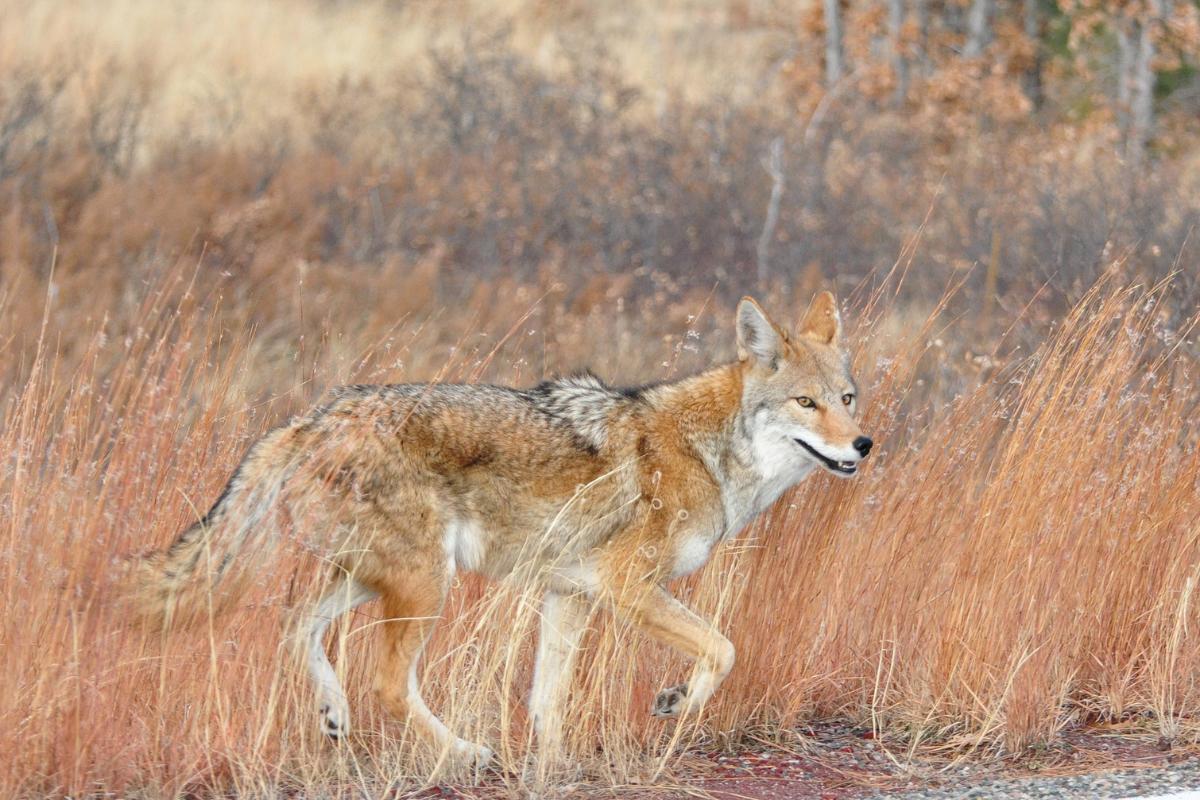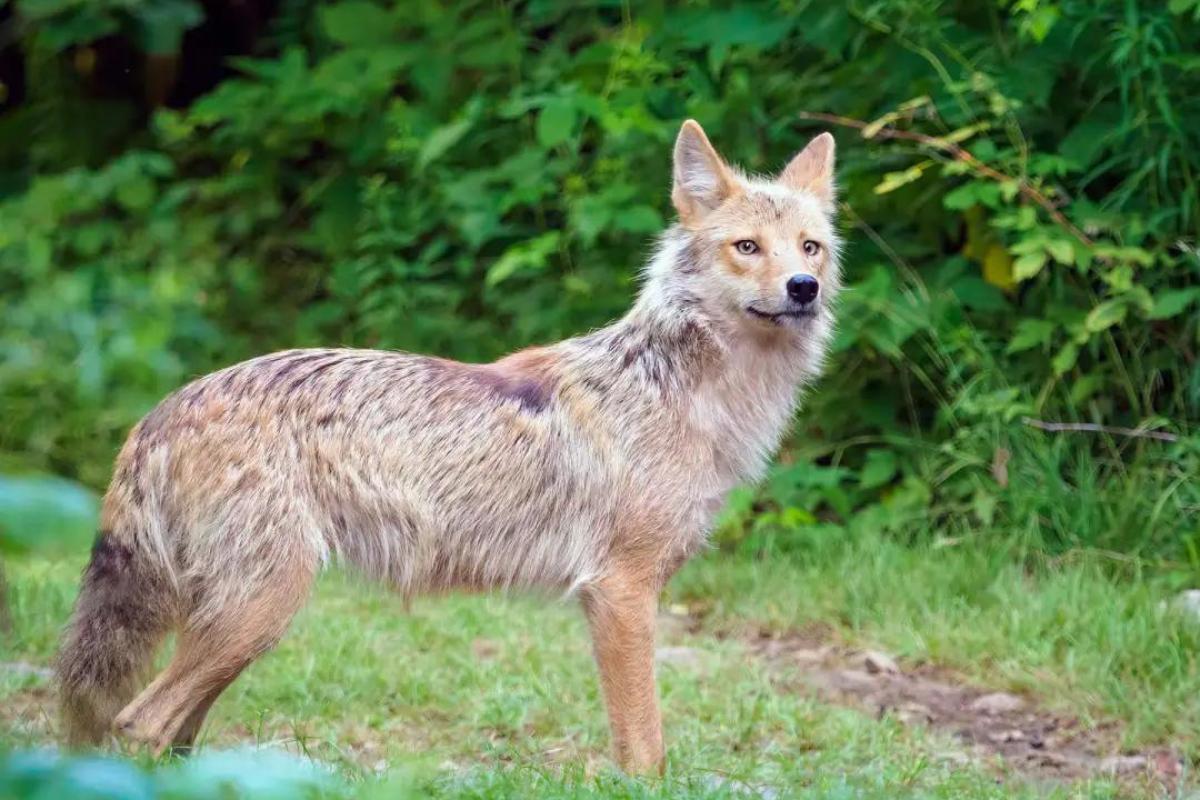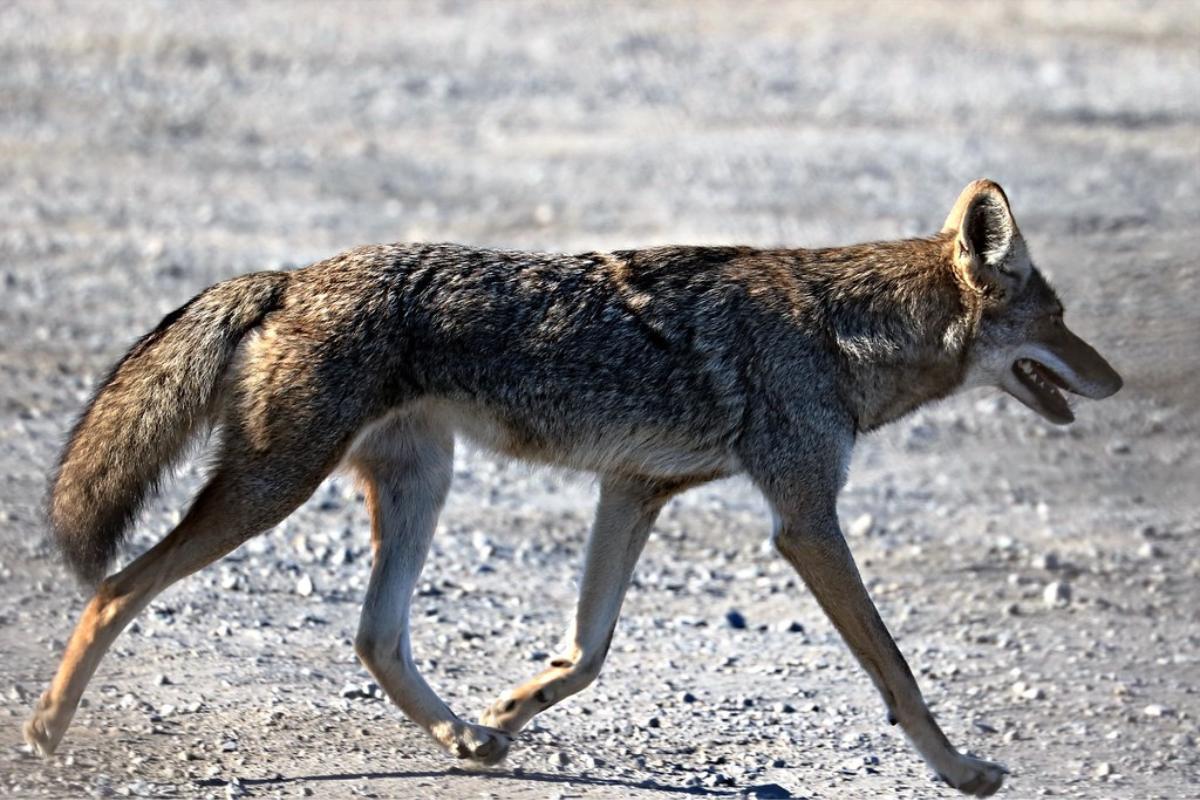Different Types of Coyote Species


While we can discuss the different types of coyote, it is important to know there is only one known species of coyote. This is Canis latrans, a type of wild canine that is closely related to certain wolf species. The coyote native range is North America, including the US, Canada and parts of Mexico. With such a large native range, it should be no surprise that subspecies of coyotes exist. There is some debate over the classification of coyote subspecies, with some zoologists giving different names to the same animal. Often these categorizations are based on their natural habitat.
At AnimalWised, we discuss the 6 different types of coyote species. These are the extant subspecies of Canis latrans, although it is important to remember there may be others yet to be discovered. We explain their characteristics with photos so you can know what they look like.
Plains coyote (Canis latrans texensis)
Historically known as the prairie wolf, the plains coyote (Canis latrans texensis) is a subspecies of coyote found predominantly in the vast plains and grasslands of North America. This native coyote range spans regions from Texas to the northern Great Plains.
These coyotes are slightly larger than the types of coyote found in other regions of North America. Their average weight is around 24-35 lb (11-16 kg) and makes them one of the biggest coyote types that we recognize here. Their fur shows a range of lighter shades, from gray and yellow to more reddish tones. This is helpful in camouflaging themselves in the sometimes sparsely vegetated prairie landscape.
This coyote subspecies has developed specific hunting strategies for open terrain. With a keen sense of hearing and sight, they are able to detect prey animals at long distances. They are particularly known for hunting rodents and common grassland birds. Their distinctive vocal communication includes howls and calls. These vocalizations play a crucial role in intragroup and territorial communication.
Although their primary range spans the Great Plains of the United States, these types of coyotes can range into adjacent areas of Texas and surrounding regions. They adapt effectively to diverse environments, including agricultural areas and suburban areas, highlighting their remarkable adaptive capacity.
Competition with other subspecies of coyotes can occur in areas where their populations overlap, especially for resources and territory. Additionally, the plains coyote's adaptability to humanized environments has led to an increase in interactions with local communities. Despite their ability to coexist with human presence, they are not a domesticated animal.
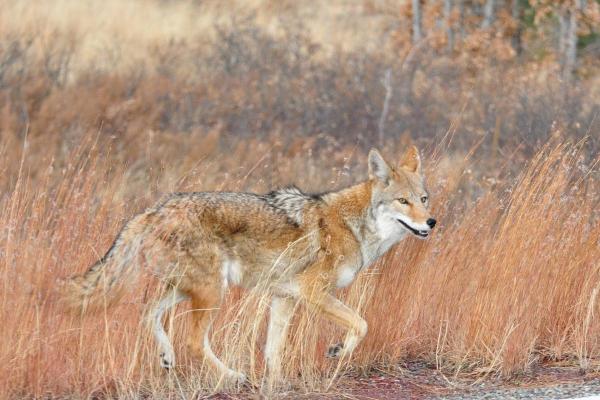
Desert coyote (Canis latrans frustor)
Desert coyotes represent an adaptation of the species Canis latrans to desert environments in North America. Some researchers do not recognize a subspecies called frustor, but this term is used to describe coyotes with notable variations in morphology, behavior and adaptations of coyotes due to inhabiting desert regions.
Desert coyotes tend to be smaller and lighter than other subspecies, with fur adapted to blend in with desert hues. These range from light gray to yellow or brown (see photo below). These types of coyotes exhibit physiological adaptations to survive in conditions of extreme heat and water scarcity. Their hunting behavior is adapted to prey found in arid areas, such as rodents and lizards. Desert coyotes are also known to be more nocturnal during times of intense heat.
They are commonly found in desert regions of North America, such as the desert southwest of the United States and Mexico. They can also adapt to semi-arid environments and areas with sparse vegetation.
This coyotes experiences competition with other coyote subspecies for the often limited resources in these arid regions. Additionally, hunting pressure and competition with other carnivorous predators such as foxes can have a deleterious effect on their survival.
Although related and of a similar appearance, coyotes are not the same as wolves. You can learn more about this distinction with our article on the differences between coyotes and wolves.
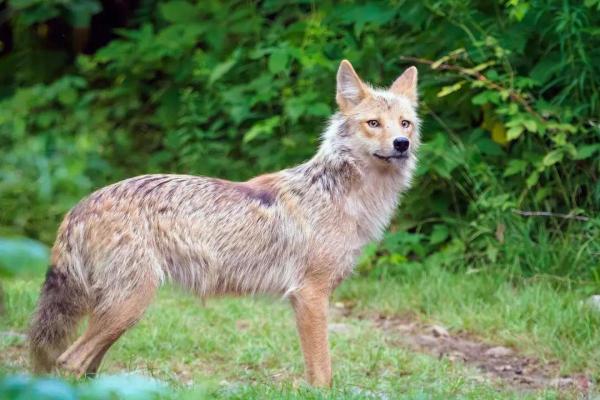
Red coyote (Canis latrans ochropus)
This subspecies of coyote type lives in certain regions of North America. Their specific habitat ranges from colder mountainous regions to temperate and arid areas of northern Mexico.
On average, male red coyotes weigh up to 40 lb (18 kg), while females weigh around 25 lb (11.5 kg). The total length of their body ranges between 3.28-4.43 ft (1-1.35 m) with a tail of approximately 16" (40 cm). Their coat varies geographically, but is generally light gray and red, with black and white markings interspersed (as seen in the photo below).
Like other types of coyotes in Mexico, the red coyote is a versatile and adaptable animal. Its diet is mainly carnivorous and includes deer, rabbits, rodents, birds, reptiles, amphibians, fish and invertebrates. They can also eat fruits and vegetables on occasion.
This type of coyote shows social and hunting behaviors characteristic of the species. Reproduction and social structure can vary depending on the local environment. They have a characteristic vocalization that manifests a solitary howl.
Learn about other canids which inhabit Mexico with our article on whether the Mexican wolf is in danger of extinction.
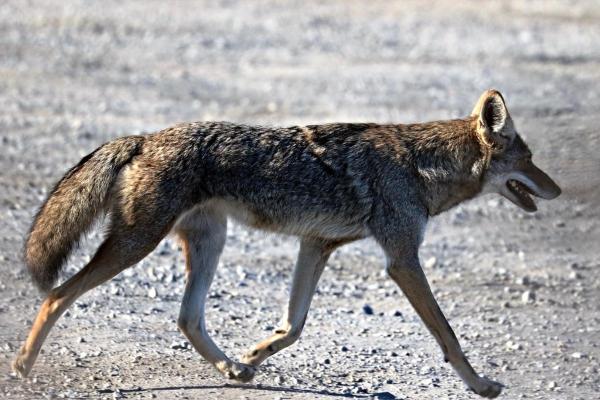
Mearns coyote (Canis latrans mearnsi)
The Mearns coyote is a subspecies of the common coyote (Canis latrans) that lives in the southwestern United States and northern Mexico. It prefers arid and semi-arid areas such as scrublands, deserts, grasslands and open forests. This type of coyote adapts to various environments, including suburban areas.
Its size is similar to that of the common coyote, with an average weight of 20-33 lb (9-15 kg) and a length of 2.5-3.2 ft (75-100 cm). It is characterized by its silvery gray fur on its back and tail, with yellowish tones on its legs and chest. Their ears are relatively large and pointed, as depicted in the photo below.
The Mearns coyote is an omnivorous animal that feeds mainly on small rodents, rabbits, lizards, insects and fruits. It can also hunt larger prey such as young deer.
They are social animals that live in family groups of 4 to 8 individuals. This species of coyote is largely nocturnal and crepuscular, but they can also be active during the day. They communicate with each other through howling, barking and other vocalizations.
Although it is not in danger of extinction, the coyote population can be affected by habitat loss and interaction with humans. As with other species of coyote, they play an important role in the ecosystem by helping to control populations of rodents and other small animals. They are also a culturally significant animal for some indigenous peoples of North America.
A curious fact about this species of coyote is that the name Mearns was given in honor of the American naturalist Edgar Alexander Mearns. He was the first to record a specimen in 1894.
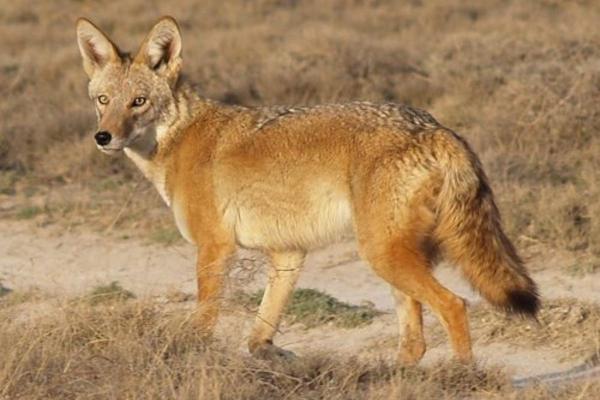
Northeastern coyote (Canis latrans thamnos)
This subspecies of coyote lives in the northeastern region of the United States and southeastern Canada. It prefers deciduous, mixed and coniferous forests, as well as rural and suburban areas.
It is the biggest coyote subspecies, with an average weight of 33-55 lb (15-25 kg) and a length of 3.2-4.2 ft (100-130 cm). It is characterized by its grayish coat with black and brown hairs. Both their snout and legs are black. It is an omnivorous animal that feeds mainly on small mammals such as rodents and rabbits. They are also known to feed on birds, reptiles, amphibians, insects and fruits. They can also hunt larger prey such as young deer.
Like the other types of coyotes, this subspecies lives in family groups of 4 to 8 individuals. They are nocturnal and crepuscular, but can also be active during the day. They communicate with each other through howling, barking and other vocalizations. The name thamnos comes from the Greek meaning ‘shrub’, referring to the preferred habitat of this coyote subspecies.
Learn about the different types of wolves with our related guide.
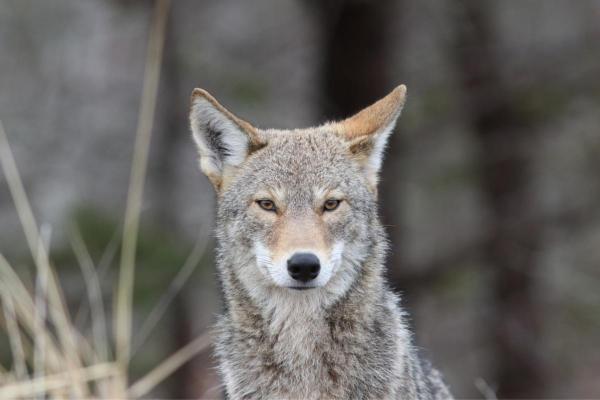
Eastern coyote (Canis latrans latrans)
The eastern coyote is a subspecies of type of coyote found in eastern North America. It is distinguished by its morphological characteristics and particular adaptations to their environment. The eastern coyote is generally medium-sized, with individuals weighing between 22-44 lb (10-20 kg), with males weighing more than females. Their fur varies in shades of gray or brown. They may have a denser coat compared to other coyote subspecies.
This subspecies inhabits a wide variety of habitats in eastern North America. From forests to suburban areas, eastern coyotes have demonstrated a remarkable ability to adapt to diverse environments. They are known for their adaptability and flexibility in choosing prey and habitats. Their diet can include a wide range of foods, from rodents to fruits and plants.
In areas where populations of these types of coyotes overlap with other subspecies, there may be competition for resources and territory. The dynamics of these interactions can influence the ecology and behavior of the eastern coyote.

If you want to read similar articles to Different Types of Coyote Species, we recommend you visit our Facts about the animal kingdom category.
- Bekoff, M., & Gese, E. M. (2003). Coyote (Canis latrans). USDA National Wildlife Research Center-Staff Publications, 224.
- Hody, J. W., & Kays, R. (2018). Mapping the expansion of coyotes (Canis latrans) across North and Central America. ZooKeys, 759, 81.
- McClennen, N., Wigglesworth, R. R., Anderson, S. H., & Wachob, D. G. (2001). The effect of suburban and agricultural development on the activity patterns of coyotes (Canis latrans). The American Midland Naturalist, 146(1), 27-36.
- Sacks, B. N., Brown, S. K., & Ernest, H. B. (2004). Population structure of California coyotes corresponds to habitat-specific breaks and illuminates species history. Molecular ecology, 13(5), 1265-1275.






